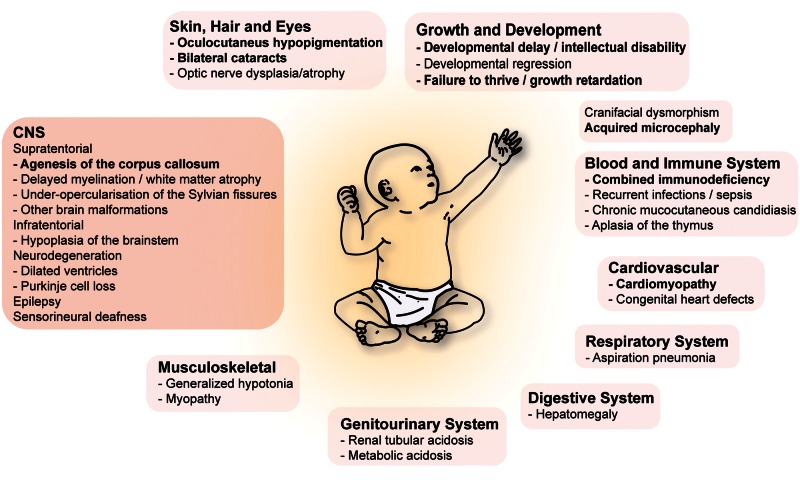Figure 3.
Vici syndrome: a multisystem disease. Mutations in the autophagy gene EPG5 cause Vici syndrome, a paradigm for multisystem diseases associated with defective autophagy. The eight cardinal features of Vici syndrome consist of agenesis of the corpus callosum, acquired microcephaly, bilateral cataracts, hypertrophic or dilated cardiomyopathy, combined immunodeficiency, and skin, hair or retinal hypopigmentation, failure to thrive and profound developmental delay. CNS manifestations are manifold and include congenital brain malformations such as agenesis of the corpus callosum with colpocephaly, cerebellar hypoplasia, hypoplasia/atrophy of the brainstem, abnormalities of the septum pellucidum, opercular hypoplasia and probably age-dependent abnormal T2 signal in the thalami. Dysgenesis of the falx, non-lissencephalic cortical dysplasia, polymicrogyria of the cerebral hemispheres, or bilateral schizencephaly have also been reported in a few individuals. Delayed myelination and diffuse white matter atrophy are commonly reported. Pointing to the potential presence of a neurodegenerative phenotype in addition to prominent deficits in brain development, dilated ventricles, Purkinje cell loss, and diffuse cerebral atrophy have been described in a subset of patients.

